Rumex L.
dock
Polygonaceae
Physostegia (juvenile foliage)
Rumex bidens R.Br. is native to south-east mainland Australia and Tasmania.
R. sanguineus L. is native to Europe, extending to north Africa and central Asia.
Rumex sanguineus L.
Rumex sanguineus is introduced into North America.
The entireentire:
(adj) having a continuous margin that is not toothed or lobed
 genus Rumex has been declared a noxious weed; numerous Rumex species are weeds of varying importance throughout the world.
genus Rumex has been declared a noxious weed; numerous Rumex species are weeds of varying importance throughout the world.
terrestrialterrestrial:
(adj) growing on land as opposed to living in water
to amphibiousamphibious:
(adj) of a plant able to live on land or in water
, emergentemergent:
(adj) (syn. emersed) with parts raised out of the water; extending up out of the water
or floating herbs
Medium rosetterosette:
(n) a radiating cluster of leaves, usually close to the ground at the base of a plant
 , erect or decumbentdecumbent:
, erect or decumbentdecumbent:
(adj) (of stems) having a portion lying along the ground, with upper parts erect or ascending
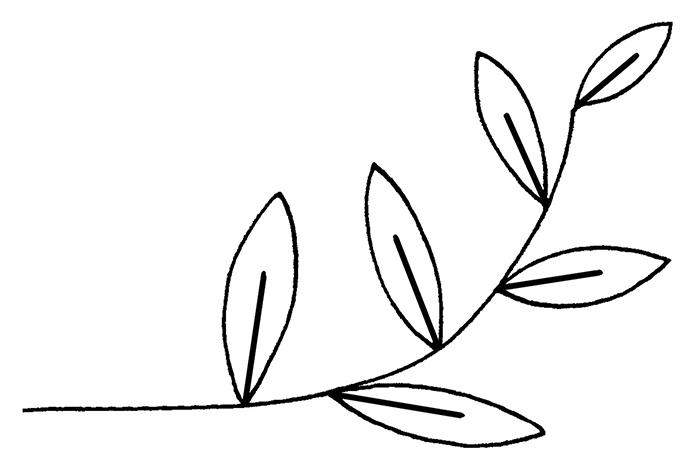 at maturity. Leaves al ternateternate:
at maturity. Leaves al ternateternate:
(adj) in threes
; stipulestipule:
(n) one or a pair of appendages that sometimes develop at the base of a leaf; may be leaf-like, scarious, or spine-like
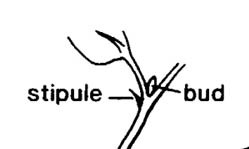 a sheath that encloses base of leaf; leaf bladeblade:
a sheath that encloses base of leaf; leaf bladeblade:
(n) (syn. lamina) the flat, expanded part of a leaf, frond, or petal (excluding, e.g., the petiole)
 ellipticelliptical:
ellipticelliptical:
(adj) in the form of an ellipse (oval)
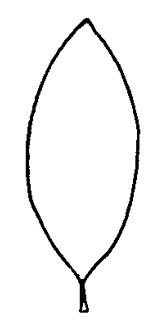 to oblongoblong:
to oblongoblong:
(adj) two to four times longer than wide, with +/- parallel sides
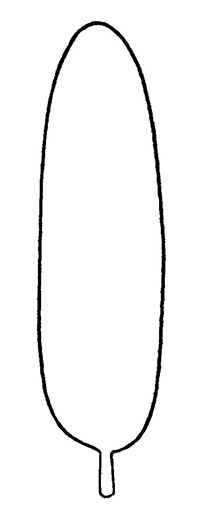 , or ovateovate:
, or ovateovate:
(adj) egg-shaped in outline; generally with the broad end at or near the base
 ; apexapex:
; apexapex:
(n) the point farthest from the point of attachment; the tip (often pointed)
acuteacute:
(adj) tapering to a sharp, pointed apex with more or less straight sides; broader than acuminate; forming an angle of less than 90 degrees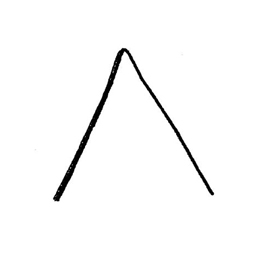 ; base attenuateattenuate:
; base attenuateattenuate:
(adj) narrowing gradually to a point
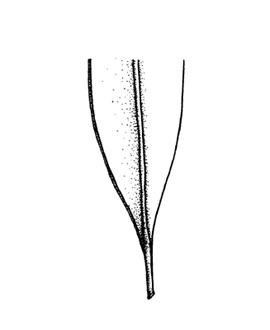 to round; marginmargin:
to round; marginmargin:
(n) edge; rim
entire, or crisped to undulateundulate:
(adj) (of, e.g., a margin) with a wavy surface; wavy in the vertical (up and down) plane
; venationvenation:
(n) the arrangement of veins in a leaf
pinnate. Inflorescenceinflorescence:
(n) the arrangement of flowers on the floral axis
 a paniclepanicle:
a paniclepanicle:
(n) an indeterminate, branched (often much-branched) inflorescence; the ultimate units may be of a different inflorescence type
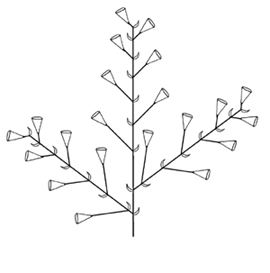 or leafy racemeraceme:
or leafy racemeraceme:
(n) an indeterminate, unbranched inflorescence having pedicelled flowers on a usually elongated axis (may be cymose)
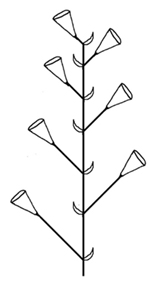 of whorledwhorled:
of whorledwhorled:
(n) bearing whorls; a type of leaf arrangement (phyllotaxis) in which leaves are in whorls
 flowers. Flowers with 6 perianthperianth:
flowers. Flowers with 6 perianthperianth:
(n) collective term for the calyx and corolla of a flower; also used for floral whorl(s) in which the calyx and corolla cannot be resolved; any of the leaves or bracts surrounding the sex organs of bryophytes
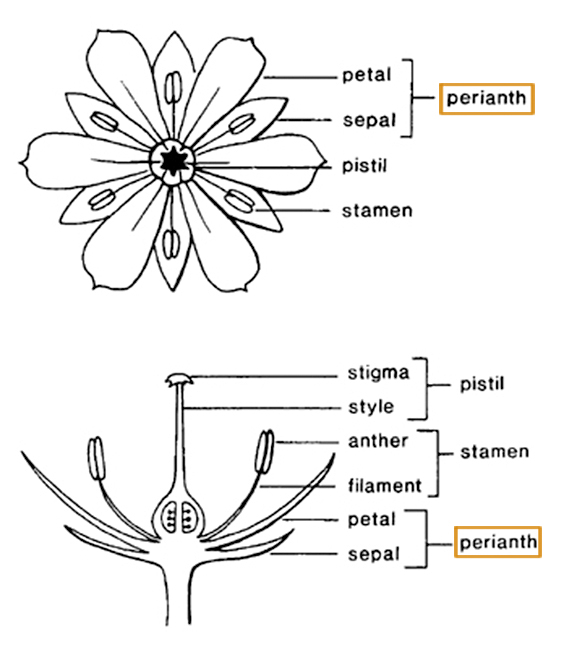 segments in 2 whorls of 3; outer whorlwhorl:
segments in 2 whorls of 3; outer whorlwhorl:
(n) three or more similar organs arranged in a circle at the same point around an axis
smaller, inner whorlwhorl:
(n) three or more similar organs arranged in a circle at the same point around an axis
enlarges, becomes hard, and encloses fruit; stamens 6; styles 3; generally green, maturing to red. Nut triangular.
damp to wet areas, may be regularly flooded
Rumex is typical of riparianriparian:
(adj) growing by rivers or streams; of, adjacent to, or living on, the banks of a river, lake, pond, etc.
habitats and wetlands, thus some species are often offered as marginal or emergentemergent:
(adj) (syn. emersed) with parts raised out of the water; extending up out of the water
pond plants. Rumex bidens, however, is truly aquatic, with a floating or emergentemergent:
(adj) (syn. emersed) with parts raised out of the water; extending up out of the water
habit.